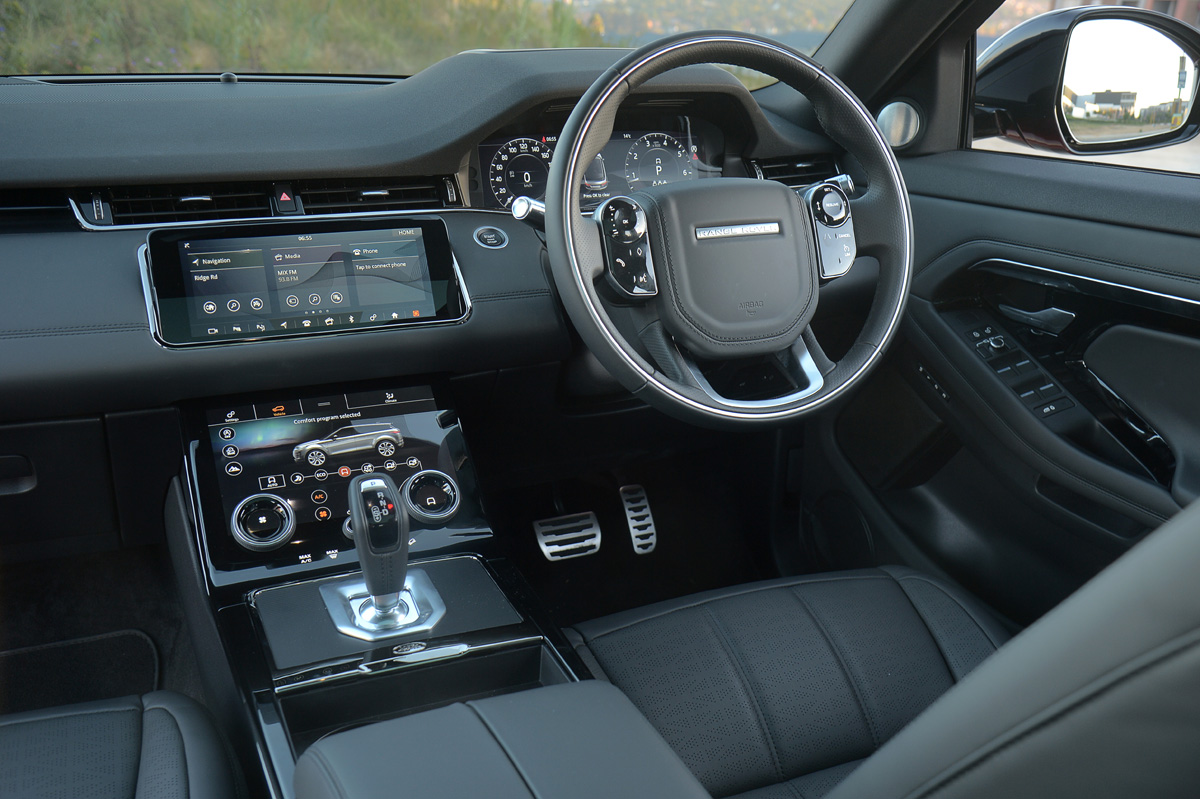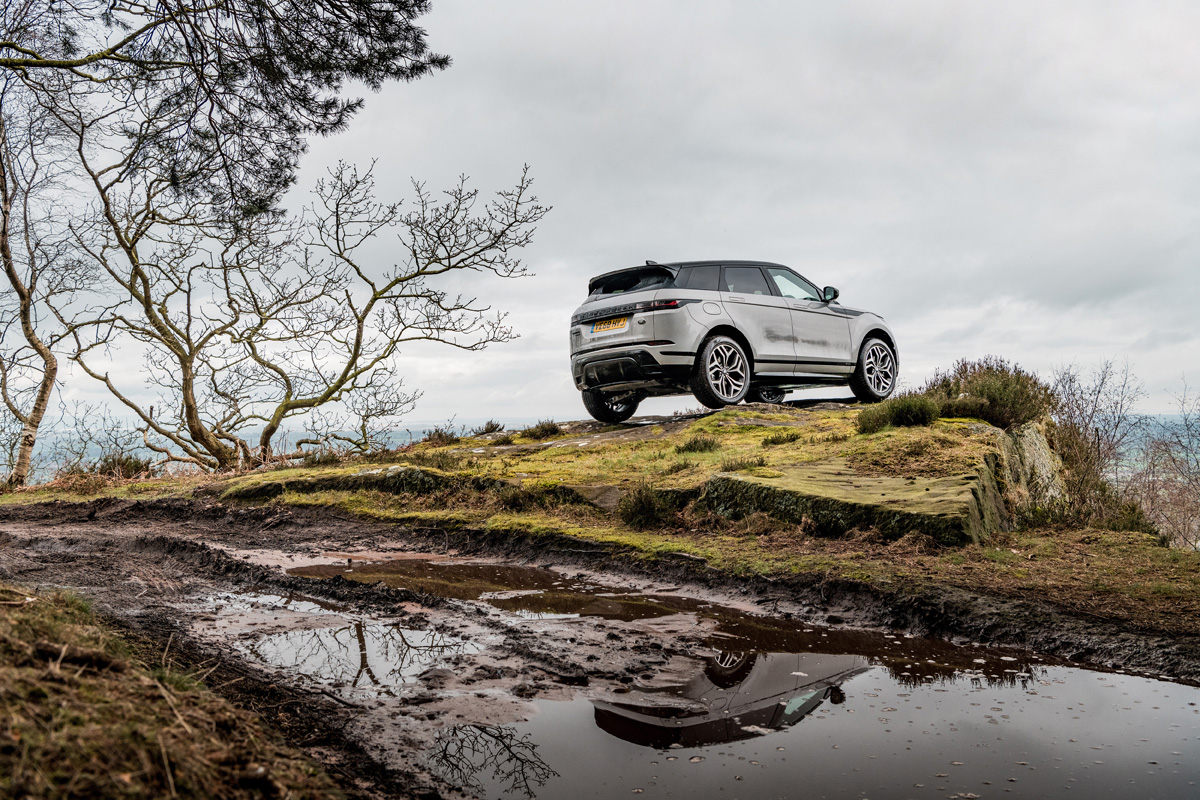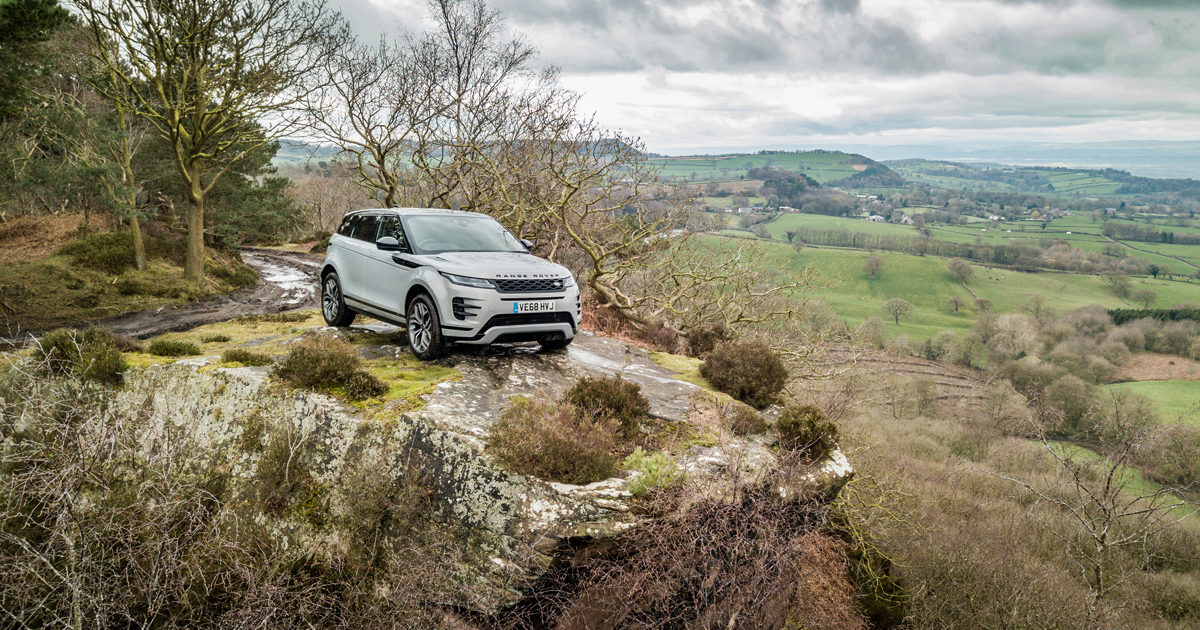Looks-wise the new Range Rover Evoque may be an evolution of the fastest-selling model in the history of Land Rover, yet it offers increased rear legroom, more load space, superior off-road capability, and state-of-the-art connectivity. We experienced the newcomer on a short, diverse route in Gauteng, including a novel 4×4 night drive …
Land Rover maintains that the recently released second-generation Range Rover Evoque is 95% all-new and only shares its door hinges with its predecessor. You will, however, be hard-pressed to pick the differences at first sight but, looking closer you will appreciate how the slim new headlamps, flush door handles, sweeping directional indicators, big wheels, and altogether neater rear-end execution afford the newcomer a decidedly sleeker profile.
According to the British marque the new model builds on the strengths of the best-selling original (it attained nearly 800,000 global sales) that introduced a younger, more status-conscious audience to the brand (76% of buyers were first-time Land Rover buyers) and is a sophisticated evolution of the first-generation model, combining heritage with cutting-edge technology.
Built on a new, 13% stiffer Premium Transverse Architecture that can be adapted for future plug-in hybrid derivatives, the newcomer has near identical exterior dimensions as the outgoing range, but the new five-door-only model gains 21 mm in wheelbase length resulting in slightly more legroom at the rear (up 20 mm) and a 10% gain in luggage space.

Interior updates
While it may not be easily discerned from the outside, the interior of the new Evoque differs markedly from that of its predecessor. It gains the latest infotainment tech from the brand, more upmarket upholstery, trim and finishes, and the neat, minimalistic Touch Pro Duo dual touchscreen layout first seen in the Velar is used in the premium models (SE-grade and up) within the 14-model line-up.
The easy-to-operate touchscreens with crisp and clear displays allow you to access a full range of connectivity technologies including Apple CarPlay, turning the car into a 4G WiFi hotspot, and accessing the different modes (Comfort, Sand, Grass-Gravel-Snow, Mud & Ruts, and Auto) of the standard new Terrain Response II all-wheel-drive system.
The 1,999 cc four-cylinder turbodiesel and 1,997 cc inline-four Ingenium petrolturbo units (a 221 kW plug-in hybrid is expected early in 2020) are carried over but have been refined. The turbodiesel, delivering 132 kW and 430 Nm of torque and mated with a nine-speed automatic transmission, offers more refinement, efficiency, and clout than the petrol-driven mill (183 kW/365 Nm).
This was evident during a novel night-time 4×4 drive with the D180- and P250 badged Evoques at the recently opened 14-hectare Jaguar Land Rover Experience facility in Lonehill, Johannesburg – the biggest of its kind in the world – and a winding route through most of Gauteng Province.

Off-road, on-road
With a ground clearance of 212 mm, approach and departure angles of 25 ° in the front and 30.6 ° in the rear, a wading depth of 600 mm, and a variety of all-terrain technologies, the Evoque was, unsurprisingly, very agile off-road. While the Terrain Response II system provides for specific off-road settings, the new Auto-mode performing continuous surface detection is probably all the normal Evoque owner will ever need.
What was astounding, though, was the effectiveness of its optional ultrasonic Wade Sensing sensors to measure the depth of a water obstacle, its world-first (optional) ClearSight Ground View – the realisation of the transparent bonnet concept of Land Rover – and the new smart rear-view mirror, transforming into an HD video screen to deliver clearer visibility in low light conditions.
On the road, the bright, clear HD picture projected in the rear-view mirror was somewhat disconcerting at first, yet one gradually became accustomed to it. Even on low-profile 20-inch rubber, the generously appointed cabin was suitably insulated against noise from the road, tyres and wind, but some noticeable rattles emanating from the instrument panels on some of the launch vehicles spoiled the overall experience. Hopefully, Land Rover will take notice of this …
While the new Evoque certainly shows improvement in key areas compared to its predecessor and is boldly priced (from R734,300 to R987,900), it now faces stiff opposition in the boutique luxury city SUV niche from vehicles like the forthcoming new Audi Q3, the uprated BMW X1, and the exceptional Volvo XC40. It remains to be seen whether it will prove as popular as the first-gen model.
Text: Ferdi de Vos / Images: Land Rover SA


